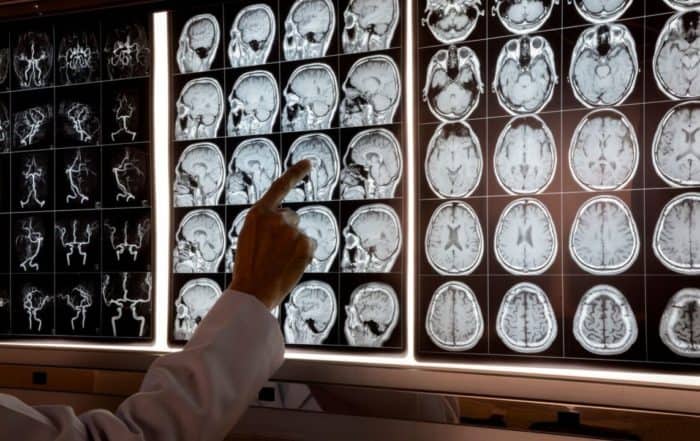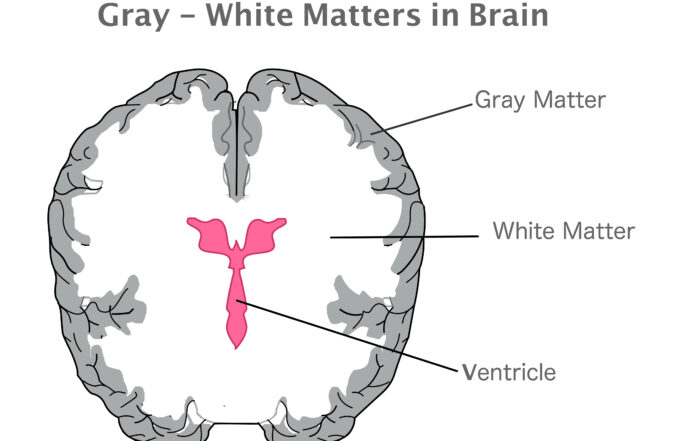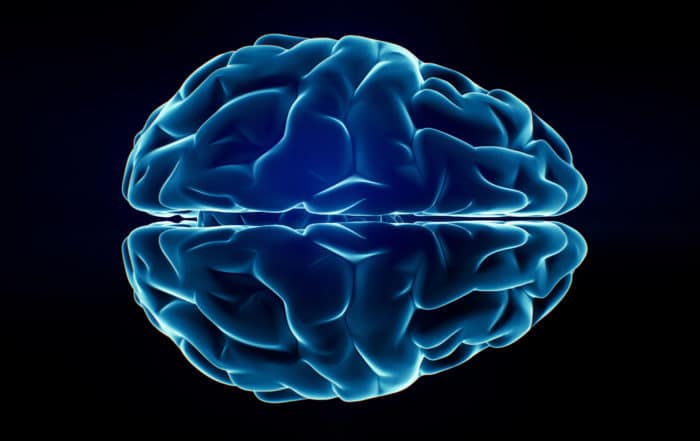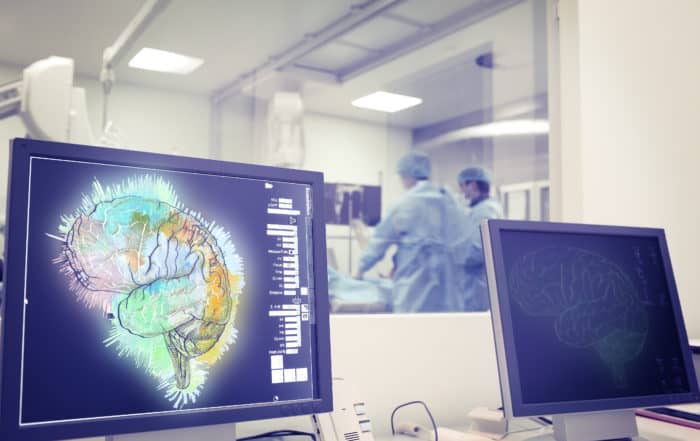Manuel Casanova, MD, discusses Transcranial Magnetic Stimulation and its potential for treating autism. He details the cerebral cortex development and notes revealed differences in mini-columnar morphology and gamma oscillations in individuals with autism. Casanova describes TMS treatments and outlines studies that correlated TMS sessions and increased cognitive abilities. He posits that TMS could shift our focus from symptomatic treatments to interventions that target core pathologies of autism. Casanova notes that although evidence is hopeful, more research is needed to understand the scope and reach of TMS.
Take the knowledge quiz for this presentation HERE
Learn more about our speaker, Manuel Casanova, MD, HERE
In this presentation:
0:00 – Organization introductions
12:00 – Autism as a neurodevelopmental disease
16:20 – Development of cerebral cortex
19:50 – Disorders of neuronal migration in autism
20:35 – Study: Neuropathological markers in autism
21:10 – Mini-columns
24:57 – Shower Curtain of Inhibition
27:58 – Study: Hat models of inhibitory deficit in autism
33:46 – Interneurons: Calcium-binding proteins
38:00 –Gamma oscillations, autism, and EEGs
43:30 – Transcranial Magnetic Stimulation (TMS)
47:53 – Clinical trial protocol and study design examples
50:29 – Effects of rTMS on gamma oscillations in autism and clinical significance
52:14 – Studies: 1) Post-TMS changes in response time and 2) Error rate and post-error rate improvement
55:40 – Heart Rhythm: Temporal and Frequency analysis
57:55 – Study: Effects of 18 TMS sessions on autonomic functions in ASD
59:20 – Studies: 1) TMS in autism: Repetitive and aberrant behaviors and 2) Effect of TMS sessions and behaviors
1:00:00 – Study: TMS in autism: Neurofeedback
1:01:00 – TMS in the public press and conclusions
1:03:58 – Q&A
Brain development and interneurons
Casanova begins by emphasizing that autism is a neurodevelopmental disorder. Therefore, he states, to create opportunities for curative treatments, we must first understand brain development and focus therapies on the pathology of autism (15:45). The presenter details the formation of the cerebral cortex (16:20) and how development differs in individuals with autism:
- Neuroblasts (excitatory; precursor cells of neurons) and interneurons (inhibitory) migrate to the cortical plate (17:00)
- Neuroblasts travel radially along arranged glial fibers
- Interneurons migrate tangentially (orthogonal to the glial fibers)
Casanova highlights that the distance traveled by tangentially migrating neuroblasts is much greater than that of the radial pathway. Therefore, tangential migration expands the window of opportunity for disruption of neuroblast migration (16:20 – 21:15).
- Mini columns (22:05) form at the joining of radial and tangential migratory currents in the cortical plate
- Cellular associations and functional exchanges between neurons and interneurons occur at the joining locations.
- When layered on top of one another, those cellular associations form the mini-column, a unit of anatomy and function (21:18).
Post-mortem studies of mini-columnar morphometry in individuals with autism revealed a significantly reduced area in the peripheral neuronal space (23:20). Casanova emphasizes that the periphery of each mini-column is populated by inhibitory cells that help establish lateral inhibition (inhibition between adjacent columns) (23:52). He presents the analogy (26:45) of a bundle of conductive copper wires (neurons) where each wire is isolated from its neighbors by non-conductive material (interneurons). Deficient insulation (diminished inhibitory cells) allows the copper wires to touch, creating alternate paths for electricity flow (27:15) and a cascade of excitement across mini-columns (24:57).
- Synchronous recruitment of PV-positive interneurons generates rhythms of gamma oscillation important in cognitive task execution (38:00)
- PV-positive cells make up around 40% of all interneurons (34:48)
- Gamma oscillations help us construct a perception of reality based on the elements around us.
Casanova outlines various studies that found a significant increase in gamma oscillatory activity in individuals with autism (50:29). These findings reflect a decrease in signal-to-noise ratio caused by a reduction in the total number of PV-positive cells or decreased inhibition (41:10). We can thus infer that “…the inhibitory cells in the periphery of the mini-column are diminished in number and function in individuals with autism…and that correcting this deficit could provide a therapeutic target in autism (24:30).”
To learn more about brain development in autism, view Exploring Monogenic Syndromes with Elevated Rates of Autism, a free webinar presented by Dr. Daniel Vogt, PhD.
Transcranial Magnetic Stimulation (TMS)
Transcranial Magnetic Stimulation (TMS) uses a polar magnetic field created from coiled conductors (43:30) to stimulate currents along the glial lines instead of through them (45:25). Due to the small magnetic field area, TMS can only treat specific parts of the brain (46:08). Because the dorsolateral prefrontal cortex (DLPC) interconnects with many brain areas, correcting inhibition deficits in this area could create a therapeutic cascade that could normalize the functionality of associations across the entire brain (47:30).
Casanova outlines his research group studies that found direct relationships between TMS sessions and increased coherence of function across brain regions (51:02), improved error-rate and post-error response time (52:14), normalized autonomic nervous system parameters (57:55), and minimized abhorrent and repetitive behaviors (59:20). He posits that this type of therapy must be investigated as an alternative to neuroleptics as TMS has no known side effects (59:55).
The presenter stresses that TMS should not be idealized as a possible cure for autism (1:01:00). Although the evidence is hopeful, he emphasizes the need for multi-center trials with sufficient participants to test the efficacy and compare TMS to other treatments and notes that long-term effects are not yet understood (1:02:35). Casanova outlines some of his latest publications before opening the Q&A (1:03:58).
This is a joint presentation hosted by The World Autism Organization and ARI.

Manuel Casanova, MD, served on the founding board of the National Alliance for Autism Research (now Autism Speaks) and the Autism Tissue Board. He has served on the Board of Directors or Scientific Advisory Board of numerous organizations including the Autism Research Institute. His research has been recognized by a EUREKA award from the NIMH for the introduction of repetitive Transcranial Magnetic Stimulation (rTMS) in the therapy of autism spectrum disorders.
Take the knowledge quiz
Can’t see the quiz below? Take it online HERE
Improving Clinical Understanding of Autism
Free webinar at 1 p.m. Eastern time (US), Wednesday, November 6, 2024 Learn about emerging research on improvements in clinical understanding that can be gained by applying findings from the neurosciences field.
White Matter Development and Language in Autism
Tyler McFayden, Ph.D., considers the intersection of white matter development and language in autism. She discusses language modality and considers how white matter may help predict autism diagnosis and inform interventions.
Behavioral and Brain Signatures of Autism in Females
Kaustubh Supekar, Ph.D., examines recent findings about gender/sex differences in autism phenotypes and brain organization. He highlights the underrepresentation of females in autism and underscores the need for a large-scale science approach. The
Overview: Medical Comorbidities and ASD
In this brief overview, neurologist Margaret Bauman, MD summarizes symptoms and signs of medical comorbidities that frequently occur, but may go unrecognized, in patients diagnosed with ASD. While the underlying cause of autism spectrum
Brain Tissue Bank – Research Brings Hope
Tune in as David Amaral, Ph.D., presents on advances in brain tissue donation and research. This presentation is on YouTube and can be shared on social media, via email, on websites, etc.
Research updates on transcranial magnetic stimulation for ASD
For more than 20 years, researchers have been studying TMS as a potential therapy for a number of neurological and psychiatric conditions. Listen as Dr.







